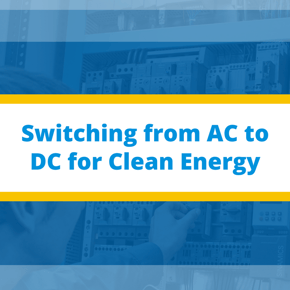 Nikola Tesla and Thomas Edison are two polarizing figures in the field of electricity, both being equally credited and acclaimed for their inventions and innovations. As we know AC, or Alternating Current, was invented by Tesla while Thomas Edison put his DC power to work, with both sides trying to prove their technology’s worth. At the time DC won the battle but in the long-run lost the war, as eventually the entire global electric infrastructure adopted AC as the standard for transmission and distribution.
Nikola Tesla and Thomas Edison are two polarizing figures in the field of electricity, both being equally credited and acclaimed for their inventions and innovations. As we know AC, or Alternating Current, was invented by Tesla while Thomas Edison put his DC power to work, with both sides trying to prove their technology’s worth. At the time DC won the battle but in the long-run lost the war, as eventually the entire global electric infrastructure adopted AC as the standard for transmission and distribution.
Fast forward into the 21st century, debate resurfaces; this time DC has made a comeback thanks to advancements in technology that have allowed its true potential to be utilized. The main hurdle that DC faced at the time of its creation was long-distance transmission due to the unavailability of devices that could step up/down voltage and current. Transformers did the job for AC, and have been doing so ever since.
But the second electrical revolution changed all of this when the need for renewable energy resources was realized, and new methods to harness these were discovered. The most penetrating example is solar generation.
The widespread use of silicon based devices in the 1960s, notably the transistor gave way to new circuits that were well suited for DC, and had the ability to act as transformers for it. Solid-state switch-mode circuits made their way into photovoltaic systems as well as wind turbines in the form of power optimizers. How is DC really different from AC?
Quite simply, compared to AC, DC has a totally different waveform and doesn’t possesses harmonics or alternating components which would result in losses such as:
- Eddy current Loss
- Hysteresis Loss
Even a few percent of losses in the core could reflect as detrimental for the grid and would need to be compensated from the generation stations. In comparison, DC-DC converters require much lighter, smaller and cheaper components which raises the efficiency of the power system, allowing quick integration to take place within modern energy sources.
In addition, the use of DC power lines over long distance is much more economical compared to AC as they can be buried underground, and do not have to undergo the curse of three-phase transmission. Several countries have already started implementing DC within their existing networks to slowly kickstart the process and make long-term changeover a plausible possibility.
Interested in learning more about Premier Automation's Drive Solutions?



